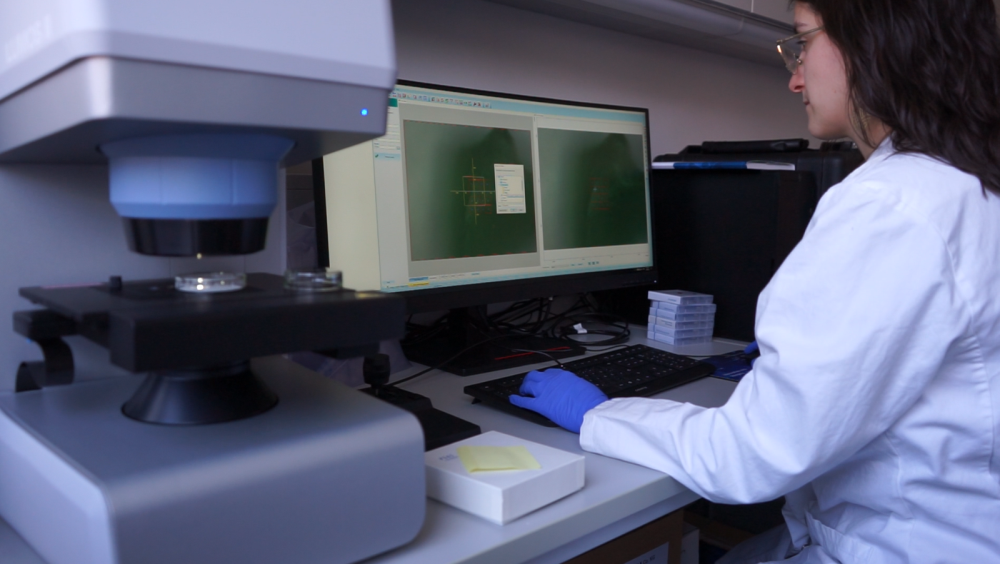![[Translate to English:] Microplastikpartikel](/fileadmin/_processed_/f/9/csm_Microplastik_ee975b1224.jpg)
| Project data | |
|---|---|
| Supervisor: | Prof. Prof. h. c. Dr. Ursula Siebert |
| Scientific work: | M.Sc. Mathilde Piette, doctoral candidate |
Project description
As part of the Microplastic-project MiPaMar this thesis deals with two main aspects of Microplastic (MP) pollution: (1) The occurrence and MP and (2) the occurrence of associated pollutants in tissue samples of top predator species from arctic marine mammals. As third aspect, the PhD study will deal with the comparison of the burden in seals from Arctic and German waters.
This study uses samples of marine mammal species collected by collaborators[1] or during necropsies at ITAW[2]. The studied species are harbour seal (Phoca vitulina), harbour porpoise (Phocoena phocoena), hooded seal (Cystophora cristata), ringed seal (Pusa hispida), beared seal (Erignathus barbatus), walrus (Odobenus rosmarus), polar bear (Ursus maritimus), humpback whale (Megaptera novaeangliae), killer whale (Orcinus orca), long-finned pilot whale (Globicephala melas), striped dolphin (Stenella coeruleoalba), and white-beaked dolphin (Lagenorhynchus albirostris).
All samples used for the present project will be collected in cooperation with several institutes conducting fieldwork. Furthermore, there are samples available at the archive of ITAW, which were collected in the course of former collaborations and projects. There are the Greenland Institute of Natural Resources, Aarhus University, Norwegian Polar Institute, Institute for marine research, Norwegian University of Science and Technology, University of Iceland, Hafrannsóknastofnun.
Nowadays, knowledge about the MPs and related additives in marine mammals of the Arctic is scarce. Firstly, the current state of MP burden needs to be identified. For this purpose, this study assesses the presence of MPs in stomach and intestine content as well as faeces samples of marine mammals. Cleaned, filtered and isolated particles are stained with Nile Red and analysed by a Fourier Transform Infrared (FT-IR) microscope to count MPs and identify their polymer composition. That gives an idea about the origin of the MPs.

Secondly, the chemicals carried by MPs cause some health issues. It is necessary to investigate the presence of these MP-related contaminants (i.e. phthalates) in the blubber and muscle of marine mammals. Knowing their concentration is a hint about the actual burden on the environment but also the potential risk for the indigenous people consuming marine mammals. That part of the project is realised in collaboration with the University of Sienna (Italy) to analyse the concentration of MP-associated pollutants in tissue samples of marine mammals using gas chromatography coupled to a mass selective (GC-MS) detector.
The methods used were developed during former investigations at ITAW (Philipp et al., 2020, 2021, 2022). In order to minimise secondary contamination, blanks are used at every step of the analysis as the samples themselves. The number of particles on the blanks is considered in the assessment to minimise overestimation of the actual exposure. Furthermore, glass containers are used for storage and metal cutlery for handling.
Finally, it is important to understand how a region considered for a long time unaffected by humans is as polluted as other regions of the world. The last part of this study focuses on a comparison of MP and related contaminant burden in harbour seals coming from Arctic and German waters. Comparing the burden in a species which can be found in both areas, such as harbour seal, indicates how the MPs and related pollutant burden evolves and moves in the marine environment.
[1] The Greenland Institute of Natural Resources, Aarhus University, Norwegian Polar Institute, Institute for marine research, Norwegian University of Science and Technology, University of Iceland, and Hafrannsóknastofnun
[2] Institute for Terrestrial and Aquatic Wildlife Research
Contact person
Stiftung Tierärztliche Hochschule Hannover
Institute for Terrestrial and Aquatic Wildlife Research
Werftstr. 6
25761 Büsum
Mathilde Piette
Phone: +49 (0)511-8568170


